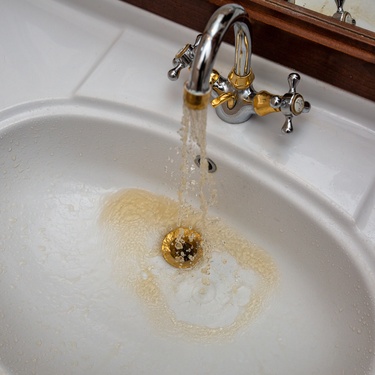
Pouring a glass of water from the tap should be a straightforward experience, but sometimes you get an unexpected taste. A metallic tang, a chemical flavor, or even a hint of dirt can make you second-guess your water quality.
Several factors contribute to these changes, from the minerals in your local supply to the pipes in your home. Here are six reasons why your tap water might taste funny and help you identify what's going on.
High Mineral Content
A metallic taste often signals a high concentration of minerals like iron, manganese, zinc, and copper. These elements can leach from natural deposits in the ground or from aging pipes.
While these minerals in small amounts typically pose no health risk, they can give your water an unpleasant metallic flavor. The taste might appear more noticeable in the morning after water has been sitting in the pipes overnight.
Chemical Disinfectants
Municipal water suppliers treat water with disinfectants like chlorine or chloramine to kill harmful bacteria and viruses. Although this process keeps your drinking water safe, it can leave behind a chemical or bleach-like taste.
The amount of disinfectant can fluctuate, which explains why you might notice the taste more on some days than others. Letting your water sit in an open container for a few hours can help the chlorine dissipate, reducing the chemical flavor.
Contaminants in Your Pipes
Old or corroded plumbing can introduce contaminants that alter your water's taste. Older homes with galvanized steel or iron pipes are especially prone to this issue. Over time, these pipes can rust, releasing particles into the water that create a metallic or rusty flavor. You may notice this taste more when you first turn on the tap.
Organic Material Buildup
A musty or earthy taste often points to the presence of decaying organic matter, such as leaves and algae, in the water source. This material produces compounds like geosmin, which humans can detect even at low concentrations.
These compounds are harmless, but they can make your water taste like dirt. This issue can become more pronounced during seasonal changes, like after heavy rainfall. Learning how to fix rusty or discolored water can help you address related contamination issues.
Algae Blooms in the Water Source
Another cause of an earthy or fishy taste is algae blooms in reservoirs, lakes, or rivers that supply your drinking water. Certain types of algae produce compounds that, while not harmful to your health, can affect the taste and odor of the water. Water treatment facilities work to remove these compounds, but sometimes trace amounts get through, especially during warmer months when algae growth peaks.
High Sulfur Content
If your water has a rotten egg smell and taste, the likely culprit is hydrogen sulfide gas. This gas can occur naturally in groundwater or result from certain types of bacteria. Even small amounts of hydrogen sulfide can create a strong, unpleasant flavor. It's more common in homes that use well water, but it can sometimes appear in municipal supplies.
Identifying why your tap water tastes off is the first step to getting back to fresh-tasting water. Whether it's a temporary municipal issue or a sign of aging pipes, paying attention to the taste helps pinpoint the cause.
Bio: Casey is a passionate copyeditor highly motivated to provide compelling SEO content in the digital marketing space. Her expertise includes a vast range of industries from highly technical, consumer, and lifestyle-based, with an emphasis on attention to detail and readability.




















